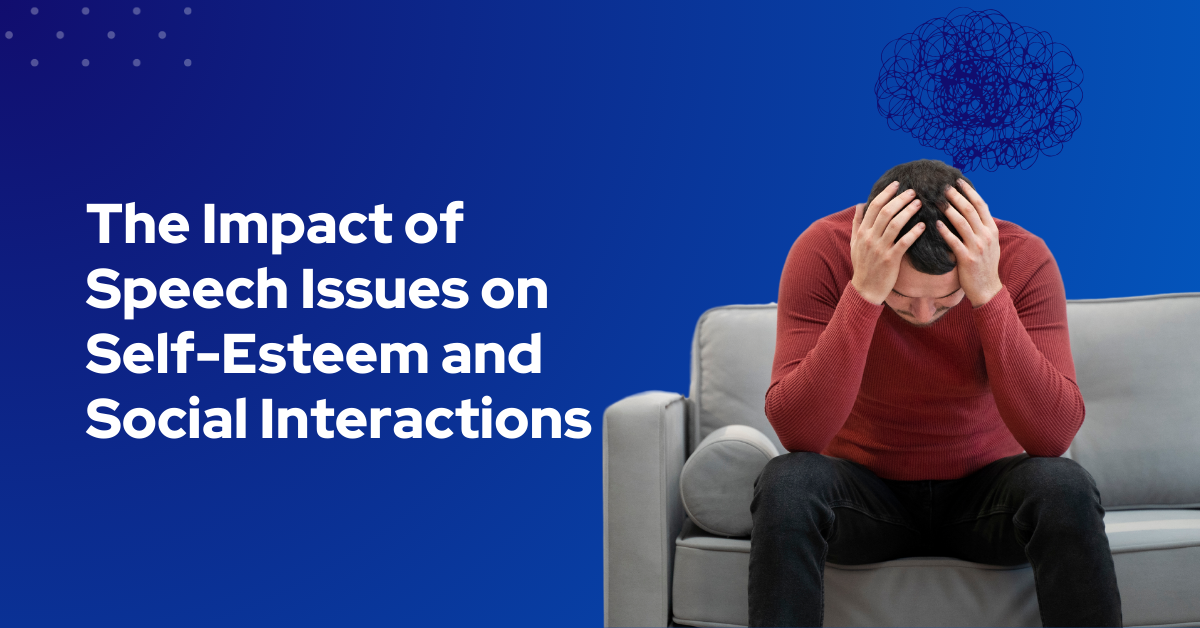For those with speech difficulties, communication can become a source of anxiety, affecting self-esteem, social interactions, and overall well-being. Speech issues such as stuttering, articulation disorders, and lisps can create barriers to social integration and confidence, especially in the early formative years. Keep reading to understand how speech issues impact self-esteem, we will examine social challenges faced by those with speech difficulties, and highlight strategies to build confidence through effective tools and supportive environments.
Understanding Speech Issues: Types and Prevalence
Common Speech Disorders
Speech disorders vary widely in type and severity, impacting individuals in different ways. Some of the most common speech issues include:

According to the National Institute on Deafness and Other Communication Disorders (NIDCD), approximately 7.5 million people in the United States have trouble using their voices .
How Speech Issues Affect Self-Esteem
The Self-Esteem Connection
Self-esteem—the confidence in one’s abilities and worth—is essential for emotional and social growth. For children and adults alike, communication is tied closely to self-esteem, as it influences how individuals are perceived by others. Research shows that individuals with speech difficulties often experience:
- Increased Anxiety: People with speech disorders frequently face anxiety in social situations, fearing judgment or misunderstanding.
- Lower Confidence Levels: Avoiding conversations or interactions due to speech concerns can lead to a lack of confidence.
- Self-Criticism: Studies indicate that children with speech issues may be more likely to self-criticize, impacting their self-image.
According to a 2021 study published in Speech, Language, and Hearing Services in Schools, children with speech disorders reported higher levels of social anxiety and lower self-esteem compared to their peers .
Social Interactions and Communication Challenges
Social Consequences of Speech Issues
Speech challenges can lead to a range of social difficulties that, if unaddressed, may persist into adulthood:
-
Difficulty Forming Friendships
Children and teens with speech disorders may feel isolated, as they struggle to express themselves in social settings. Misunderstandings or teasing can hinder the formation of meaningful friendships. -
Reduced Participation in Group Activities
Fear of public speaking or participating in group discussions often leads to withdrawal. Studies indicate that many students with speech difficulties tend to avoid activities that require verbal participation. -
Increased Risk of Bullying
Unfortunately, children with speech differences are at a higher risk of bullying, impacting their social lives and self-worth. A study by the University of Michigan found that students with communication disorders are nearly twice as likely to be bullied as their peers . -
Social Anxiety in Adults
Speech issues are not limited to childhood; they can extend into adulthood, impacting professional interactions, romantic relationships, and overall quality of life.

The Role of Peer Support
Peer support can play a crucial role in mitigating the negative social effects of speech disorders. Research indicates that supportive friends and family can boost confidence and encourage social engagement, highlighting the importance of inclusive environments.
Addressing Speech Issues: Effective Strategies
Early Intervention and Therapy
Early intervention has been shown to make a significant difference in improving speech abilities. Speech-language therapy (SLT) provides targeted exercises to improve articulation, fluency, and confidence. The American Speech-Language-Hearing Association (ASHA) emphasizes that children receiving SLT before age 5 show better outcomes in school and social settings .

Table according to the American Speech-Language-Hearing Association (ASHA) and National Institute on Deafness and Other Communication Disorders (NIDCD)
Tongue Training Devices and Oral Exercises
Tongue training devices like Spot Pal can support individuals in maintaining proper tongue posture and building oral muscle strength, which can help with clearer speech. For children, Spot Pal offers a way to practice tongue exercises in a fun and interactive manner.
The Power of Supportive Therapy
Real-life success stories often highlight how children and adults have used therapy and supportive tools to overcome social challenges related to speech issues. A mother of an 8-year-old child with a lisp shared how her child’s confidence improved after combining speech therapy with daily oral exercises using a device like Spot Pal. Not only did his speech clarity improve, but his enthusiasm for speaking up in class grew as well.
Statistics: Understanding the Impact of Speech Issues on Mental Health

These statistics underscore the connection between speech issues and emotional well-being.
Practical Tips for Parents and Caregivers
Encourage Open Communication
Talking openly about speech differences can reduce shame and stigma. Encourage your child to express any frustrations they feel about communication and validate their experiences.
Practice Daily Oral Exercises
Simple oral exercises at home, such as blowing bubbles or tongue push-ups, can help strengthen oral muscles and support speech clarity.
Foster Positive Social Environments
Environments where children feel accepted make a significant difference. Encourage teachers, coaches, and peers to foster inclusivity, helping children with speech disorders feel confident and included.
Speech issues, if left unaddressed, can have lasting effects on self-esteem and social interactions. However, with early intervention, supportive environments, and tools like Spot Pal, parents can help children and adults build confidence, improve communication, and thrive in social settings. By fostering understanding and providing the right resources, we can create a world where everyone feels confident in their unique voice.
Key Takeaways:
- Speech issues impact self-esteem and social interactions significantly.
- Early intervention, supportive tools, and inclusive environments can mitigate these effects.
- Tools like Spot Pal offer a fun way for children to work on oral strength, improving speech clarity.
References
- National Institute on Deafness and Other Communication Disorders (NIDCD). (2023). Speech and Voice Disorders.
- University of Michigan. (2023). Social Outcomes for Children with Communication Disorders.
- American Speech-Language-Hearing Association. (2023). Benefits of Early Intervention in Speech-Language Therapy.

Share:
Breaking Free from Pacifier Dependency and Thumb Sucking: A Parent's Guide
How Mouth Breathing Affects Sleep Quality and Overall Health